Cannabis, also known as marijuana or hemp, has been used for centuries for medicinal and recreational purposes. Its history is long and varied, with the plant playing a role in many different cultures worldwide. From ancient times to today, cannabis has had a fascinating journey of controversy, innovation, and evolution. In this article, we’ll take a look at the history of cannabis, exploring its origins, its uses, and its cultural significance.
A Timeline of Cannabis History in Human Society
- 5000 BCE: Cannabis seeds and oil are used for food and medicine in China
- 2737 BCE: Chinese Emperor Shen Neng uses cannabis tea for medicinal purposes
- 1500 BCE: Cannabis is used for medicinal purposes in India and is mentioned in the ancient Hindu text, Atharvaveda
- 1000 BCE: Scythians in present-day Russia and Ukraine use cannabis for religious ceremonies and as a painkiller
- 600 BCE: Greek historian Herodotus writes about the Scythians’ use of cannabis
- 200 BCE: Chinese surgeon Hua Tuo uses cannabis resin as an anesthetic during surgery
- 1000-1300 CE: Islamic scholars use cannabis for medicinal purposes
- 1500-1700 CE: European explorers bring cannabis to the Americas
- The 1800s: Cannabis is widely used as medicine in the United States
- The 1910s-1930s: Anti-cannabis propaganda spreads in the United States
- 1937: Marijuana Tax Act effectively bans cannabis in the United States
- The 1960s-1970s: The counterculture movement in the United States embraces cannabis use
- 1996: California becomes the first state to legalize medical cannabis
- 2012: Colorado and Washington become the first states to legalize recreational cannabis
- 2018: Canada legalizes recreational cannabis
- 2019: The United Nations votes to remove cannabis from its list of most dangerous drugs
- 2019: Illinois becomes the eleventh state in the United States to legalize recreational cannabis
- 2020: Voters in Arizona, Montana, New Jersey, and South Dakota approve ballot measures to legalize recreational cannabis
- 2020: The United Nations Commission on Narcotic Drugs votes to reschedule cannabis and its derivatives, recognizing its medical potential
- 2021: New York becomes the fifteenth state in the United States to legalize recreational cannabis
- 2021: Mexico legalizes recreational cannabis, becoming the third country in the world to do so, after Uruguay and Canada
- 2021: The U.S. House of Representatives passes the SAFE Banking Act, which would allow cannabis businesses to access banking services and reduce cash transactions
- 2022: Maryland, Missouri, and Rhode Island legalized recreational use
- 2023: Oklahoma opens recreational dispensaries; Kentucky becomes one of the few Southern states to legalize medical cannabis
Discovering Marijuana & Hemp
The discovery of marijuana and hemp goes back thousands of years and has been found in many different cultures worldwide. Both plants have played important roles in medicine, spirituality, and industry and are a subject of fascination and innovation today.
Marijuana
Marijuana has been used for medicinal and recreational purposes for thousands of years. Its discovery is thought to have originated in Central Asia, where the plant grew wild.
The first recorded use of marijuana for medical purposes was in China around 2737 BCE. Emperor Shen Neng is said to have used marijuana tea to treat various ailments, including gout, rheumatism, and malaria.
From China, marijuana use spread to India, where it became an essential part of Ayurvedic medicine. Marijuana also played a role in spiritual practices in India, with the god Shiva being associated with the plant.
Hemp
Hemp is a variety of cannabis plants grown for their fibers and seeds. Its discovery dates back to ancient times, with evidence of hemp fibers found in archaeological sites in Asia and Europe dating back to the Neolithic period.
The use of hemp seeds for textiles, rope, and paper was widespread in ancient civilizations, including China, Egypt, and Greece. Hemp also played a role in the founding of the United States, with the founding fathers, including George Washington and Thomas Jefferson, growing hemp on their plantations.
Weed Crosses the Globe
The story of how cannabis crossed the globe and became a part of many societies is fascinating and full of adventure, intrigue, and unexpected twists and turns. It all began in the remote mountains of Central Asia, where the wild cannabis plant first grew. For centuries, the plant was used by the nomadic tribes of the region for its medicinal properties, as well as for making ropes and fabrics.
But it wasn’t until the Silk Road was established in the 2nd century BCE that cannabis began to make its way out of Central Asia and into other parts of the world. Traders and travelers on the Silk Road often carried cannabis with them, using it as a medicine, a currency, and a trade commodity.
One of the first cultures to adopt cannabis was China, which was used for medicinal and spiritual purposes. The Chinese soon began cultivating the plant, and by the 1st century CE, it had become an essential part of Chinese medicine. From China, cannabis spread to other parts of Asia, including India, where it was used as a painkiller and a remedy for various ailments.
As cannabis made its way across Asia, it began to attract the attention of Europeans, who were fascinated by the plant’s medicinal properties and potential for use in industry. In the 16th century, the Spanish brought cannabis to the Americas, where it quickly spread throughout the continent. The colonizers used the plant for medicinal purposes. Still, it also became a critical part of the African slave trade, with enslaved people being brought from West Africa to work on hemp plantations in the Caribbean and South America.
By the 19th century, cannabis had become an essential crop in many parts of the world, including Europe, Africa, and Asia. It was used for various purposes, from making textiles and paper to treating pain and nausea. However, with the rise of anti-cannabis sentiment in the early 20th century, the plant began to be demonized and criminalized, leading to a period of prohibition that lasted for much of the 20th century.
Today, however, cannabis is gaining acceptance and recognition for its many benefits. As more and more countries legalize cannabis for medical and recreational use, the plant’s journey from the mountains of Central Asia to the rest of the world is coming full circle. And who knows where the plant’s journey will take it next?
The U.S. History of Cannabis
Cannabis has had a long and complex history in the United States, with its uses and legality shifting over time. This versatile plant has served as a source of industrial hemp, a potential medical treatment, and a recreational drug, generating controversy and debate. To understand the role cannabis has played in American society, it is essential to examine these three aspects in more detail.
Industrial Hemp
Industrial hemp, a variety of Cannabis sativa with low THC content, has been cultivated in the United States since the colonial era. Hemp was a vital crop for early settlers, who used it to produce rope, textiles, and paper. Both George Washington and Thomas Jefferson grew hemp on their plantations. The demand for hemp products led to the development of specialized processing equipment, such as the hemp brake and decorticator.
However, in the early 20th century, hemp production began to decline due to a combination of factors, including the rise of synthetic fibers, a lack of processing technology, and the growing stigma surrounding cannabis.
The 1937 Marihuana Tax Act effectively criminalized hemp cultivation by imposing strict regulations and taxes, further contributing to its decline. In recent years, however, there has been a resurgence of interest in industrial hemp, with the 2018 Farm Bill legalizing its cultivation and removing it from the list of controlled substances.
Medical
The use of cannabis for medicinal benefits dates back thousands of years. Still, its history in the United States began in the 19th century when it was introduced as a treatment for various ailments. Cannabis was available in pharmacies as an over-the-counter remedy and was included in the United States Pharmacopeia, a compendium of approved drugs, until 1942.
As the stigma surrounding cannabis increased in the 20th century, its medicinal use declined, and it was eventually classified as a Schedule I drug under the Controlled Substances Act of 1970. However, in the 1990s, public opinion shifted in favor of medical cannabis, and California became the first state to legalize it in 1996.
Since then, numerous states have followed suit, and ongoing research has identified potential therapeutic uses for cannabinoids in treating conditions such as chronic pain, epilepsy, and multiple sclerosis.
Recreational
Recreational use of cannabis has been a contentious issue in the United States for over a century. In the early 1900s, concerns over the effects of cannabis led to a wave of prohibition, with many states enacting laws to restrict or ban its use due to its psychoactive properties. The Marihuana Tax Act of 1937 and the subsequent Controlled Substances Act of 1970 further solidified the illegal status of recreational cannabis on a federal level.
However, in the late 20th and early 21st centuries, there has been a shift in public opinion and policy surrounding recreational cannabis. In 2012, Colorado and Washington became the first states to legalize the recreational use of cannabis, with many other states following suit. Despite ongoing debates over potential health risks, social consequences, and federal law conflicts, the movement toward cannabis legalization continues to gain momentum across the United States.
The War on Drugs
The War on Drugs has its roots in the early 20th century, but it gained momentum under President Richard Nixon, who declared drug abuse as “public enemy number one” in 1971. Nixon’s administration introduced a series of measures to combat drug abuse, including establishing the Drug Enforcement Administration (DEA) in 1973.
Marijuana was classified as a Schedule I drug under the Controlled Substances Act of 1970, which placed it in the most restrictive category, alongside substances like heroin and LSD. This classification was based on the belief that marijuana had a high potential for abuse, no accepted medical use, and a lack of safety under medical supervision.
Throughout the 1980s and 1990s, the War on Drugs intensified under subsequent administrations, with increased funding for law enforcement, mandatory minimum sentences for drug offenses, and the expansion of civil asset forfeiture. These policies disproportionately targeted marijuana users and distributors, dramatically increasing arrests and incarcerations for non-violent drug offenses. Many argue that this approach has been racially biased and disproportionately affected communities of color.
Modern Science and Marijuana
In recent years, modern science and Western medicine have made significant strides in understanding the potential benefits and risks of marijuana use. As the legal landscape surrounding cannabis continues to evolve, researchers have focused on the plant’s therapeutic potential and potential adverse health effects.
One of the most notable discoveries in cannabis research is identifying the endocannabinoid system (ECS). This complex cell-signaling system plays a crucial role in maintaining homeostasis within the body. This system is composed of endocannabinoids, receptors, and enzymes, and it is responsible for regulating a wide range of physiological processes, including mood, appetite, sleep, and immune function. The active compounds in marijuana, known as cannabinoids, interact with the ECS, influencing its activity and producing the various effects of cannabis use.
A 2017 report from the National Academies of Sciences, Engineering, and Medicine (NASEM) reviewed over 10,000 scientific studies on the health effects of cannabis and cannabinoids.
The report found conclusive evidence that certain cannabinoids, such as cannabidiol (CBD) and delta-9-tetrahydrocannabinol (THC), can effectively treat chronic pain, chemotherapy-induced nausea and vomiting, and muscle spasms associated with multiple sclerosis. The report also highlighted the need for further research into the potential therapeutic uses of cannabis and its constituents.
In addition to its potential therapeutic applications, researchers have also studied the potential risks and adverse effects of marijuana use. For example, a 2014 study published in the Journal of Neuroscience found evidence of structural changes in the brains of young, recreational marijuana users, suggesting that even casual use may have lasting effects on brain development.
Furthermore, a meta-analysis published in The Lancet Psychiatry in 2019 found that high-potency cannabis use was associated with a significantly increased risk of developing psychotic disorders, highlighting the importance of understanding the potential risks of marijuana use, particularly for vulnerable populations.
As the public increasingly accepts marijuana and its potential medical applications, the demand for rigorous scientific research will continue to grow. By deepening our understanding of the complex interplay between cannabis, the endocannabinoid system, and human health, modern science has the potential to unlock new therapeutic applications and guide evidence-based policy decisions in the years to come.
How Does the History of Cannabis Relate to the Science of Vaping Concentrates?
The history of cannabis dates back thousands of years, but it’s the recent advancements in vaping cannabis concentrates science that have revolutionized consumption. From ancient traditions to modern technology, the evolution of cannabis and the science of vaping concentrates showcase the plant’s enduring legacy and ongoing potential for innovation.
The Future of Weed
In recent years, there has been a shift in public opinion and policy surrounding marijuana. Many states have legalized marijuana for medical use, and a growing number have also legalized it for recreational use. Advocates for marijuana legalization argue that the War on Drugs has been ineffective, costly, and unjust and that resources would be better spent on education, prevention, and treatment of drug addiction.
Despite these changes at the state level, marijuana remains illegal under federal law, creating ongoing conflicts and tensions between state and federal authorities. The criminalization of marijuana has had a lasting impact on American society, shaping public opinion, influencing policy decisions, and contributing to the growth of the prison-industrial complex. As the debate around marijuana legalization continues and as policies are updated, marijauna advocates hope to see more US states and other countries allowing their citizens to decide on weed for themselves.
Key Takeaways
From the ancient civilizations of China and India to the modern-day legal battles over its use, cannabis has had a long and complex history. It has been both praised and vilified, celebrated and demonized. But throughout it all, the plant has maintained its place as one of the most intriguing and fascinating substances on earth.
Whether you use it for medical purposes, recreational enjoyment, or simply as a source of curiosity and wonder, cannabis will continue to be a part of our world, both in its past and future. As we move into a new era of cannabis acceptance and understanding, it’s important to remember the rich history of this remarkable plant and the many ways it has shaped our world.

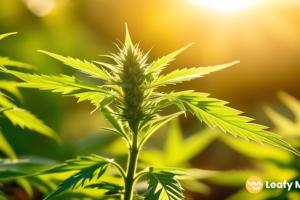
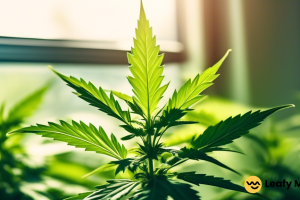





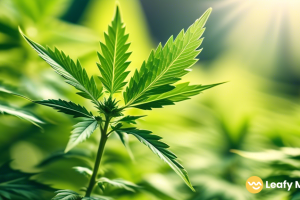
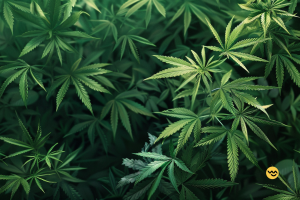
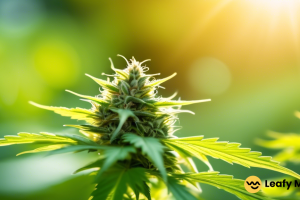
Leave a Reply